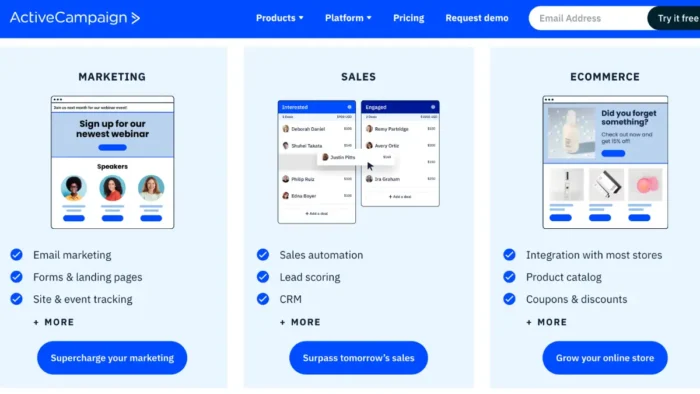The Coronavirus took a toll on all of us. Of course, some industries felt the impact more than others. Some of the industries that took the hardest hits include:
- The hospitality industry (estimated loss of $820 billion)
- The gambling industry (estimated loss of $150 billion)
- The airline industry (estimated loss of $113 billion)
Those are some serious numbers. What’s worse, millions of people from all across the globe will lose their jobs even after the outbreak is over. However, things aren’t bad for everyone. There are, in fact, some industries that are profiting from all of this social distancing.
Record Numbers During the Quarantine
It’s possible to make money even during a worldwide crisis like this. As you might’ve assumed, Netflix has experienced an increase in traffic and revenue, since people have been binge-watching their favorite TV shows and watching movies ever since the pandemic started.
The most popular online streaming service has had so much traffic on their hand, that they are officially cutting video quality down in Europe. This move will help Netflix reduce overall traffic by 25% and ensure that its members from every corner of the globe have quality service.
How COVID-19 Impacted E-commerce
Another industry that seemingly isn’t suffering a huge hit is e-commerce. This isn’t that surprising since e-commerce doesn’t involve too much physical contact like industries that suffered the biggest blows. Online businesses even have a chance to make a healthy profit during this period. Here’s why.
The virus has already had a huge impact on e-commerce in countries with significant numbers of victims. A recent study conducted by Ipsos MORI revealed that while the brick-and-mortar retail stores are going through a slump, there’s an increased interest in e-commerce.
In several countries with high numbers of Coronavirus cases, people are showing more interest in e-commerce now than they were a few months ago:
- 57% of people in Vietnam are more interested in e-commerce
- 55% of people in India are more interested in e-commerce
- 50% of people in China are more interested in e-commerce
- 31% of people in Italy are more interested in e-commerce
- 27% of people in Russia are more interested in e-commerce
In other countries, like the United Kingdom, people haven’t shown any increased interest in e-commerce, but they aren’t showing any less interest either. Around 50% of people in England report having no changes in their online shopping habits.
This even isn’t the end of the read for e-commerce spending. Certain analysts predict that customers will start spending even more money online once this is over. The change in consumer behavior is nothing strange in extreme situations, so this shouldn’t come as a huge surprise to many people.
According to a COVID-19 Business Impact Survey published by Marketing Week, almost 80% of companies in the UK feel like their customers will have delays in spending decisions.
The same survey also revealed that most marketers feel like they will have to make huge changes to their strategies after the outbreak is done. More than 60% of respondents said that they are currently reviewing their marketing plans in order to prepare them for later.

What Can We Learn from All of This?
The data above showed us how the consumers responded. But how have the e-commerce companies themselves responded? What are companies in infected countries doing? The best example of this we can see in China, ground zero for the Coronavirus and the country with the most cases.
Companies in the United States, the United Kingdom, and Australia are all trying to respond to this situation. Unfortunately, most of them are failing miserably. Luckily for us, the Harvard Business Review recently gathered data from Chinese e-commerce companies that gave us an insight into their tactics:
Branding is Everything in Today’s World
Experts predict that Chinese companies will increase their mobile ad spending by almost 7% in the months following the outbreak to position themselves on the global market. Why are they doing that? Because people still trust well-established brands that feel safe and familiar.
For the last two decades, Chinese companies have tried to kill off the “Made in China” stigma. Customers want brands that look familiar and secure. That’s why you need to or build a Progressive Web App that will allow your site to have a consistent look across all devices and screen sizes.
Be Ready for Innovation at All Times
While this may be easier said than done, you need to try and be as flexible as possible. People will change their shopping habits a lot in the next following months. You need to be able to spot these alterations and adapt your operations in just a few weeks, or even days.
You need to be prepared for making changes to your service, operations, and most importantly, the website at all times after all of this. Furthermore, having a good product information management is crucial, if you want to make sure that things like availability, size, and price of your products are 100% correct.
User Satisfaction Remains Top Priority
When facing a crisis, people tend to become aggressive, defensive, and overly critical. But you have to face: there’s no way to avoid triggering some people. You should steer your attention away from responding to all of the critics and try to keep your average customer as satisfied as possible.
That means you need to be familiar with your target demographic completely and be prepared to talk and learn more about them on the fly. To provide good customer service and keep the user experience at a high level, live chat software should be a must.
Mobile is Where Things Are At Now
Since the quarantine started, phone usage has increased significantly. As Washington Post reports, smartphone usage has increased 33% during that period and the average screen time has gone 185% up. You can see that people don’t use their mobile devices just on the go anymore.
Instead, they use them everywhere: while walking out and about, on their way to work, in the office on during lunch breaks, and even while they’re sitting in the comfort of their home. The smart thing to do would be to hire an app development company to create an app that will suit your business perfectly.
What to do After the Epidemic is Over?
Coronavirus is a real health threat. Most of us have never experienced such a threat before. Every business owner, worker, and individual will need to take all of this as seriously as possible. Some people are still in a state of panic. We can safely assume that most will remain cautious.
At the moment, China’s e-commerce merchants are experiencing a hit. Their sales of physical goods have dropped by 11% because people are still afraid that they will catch the Coronavirus through contact with the goods. The numbers are slowly improving, but you can learn something from this.
More than ever, people are cautious about their orders. That means you need to be aware that you’re going to put in extra work in the customer relations department. You have to be prepared to talk with panic-stricken customers, to deal with their fears, and have systems in place to handle this situation.
Conclusion
Every situation gives us a chance to learn from it and here’s a lot we can learn from this pandemic. The most important thing is not to panic, realize that everything will get back in normal and that in a few months, you’ll have the chance to try out everything you learned from this.
We hope that you enjoyed our article and found it informative. Do you run an e-commerce business? What do you think, how will the market look after the pandemic is over?



